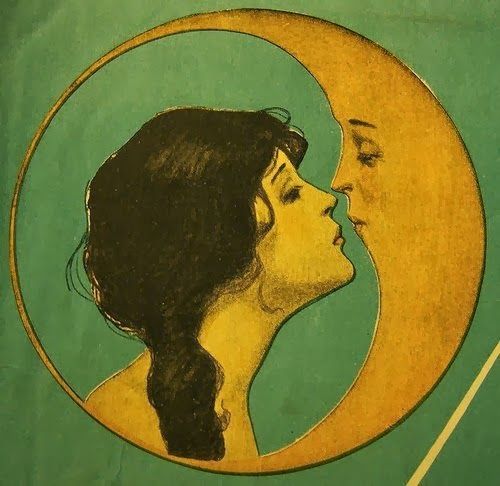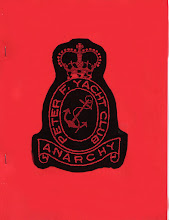Saturday, March 31, 2018
some author activity: Brockwell, Anstee, Earl + mclennan,
Stephen Brockwell has a new poem up at Politics/Letters live; Cameron Anstee is interviewed for the Invisible Publishing blog; Amanda Earl has a new poem up at Unlikely Stories; and rob mclennan is being interviewed over at poetry mini interviews.
Friday, March 30, 2018
above/ground press 25th anniversary essay: Gil McElroy
This is the thirteenth
in a series of short essays/reminiscences by a variety of authors and friends
of the press to help mark the quarter century mark of above/ground. See links to the whole series here.
above/ground
press, in the guise of a magazine entitled Stanzas,
came into my life in the mid-1990s when I was living in Halifax, and of course this was my
introduction to rob (whom I wouldn’t actually meet until 2001 when we did a
poetry reading together at York
University).
Here’s where I
might embrace one of the most overused and hackneyed clichés and tell you that
it changed my life. But the thing is: it did, actually.
This, of
course, was in the days before the advent of social media, and connecting with
other writers, others of your own ilk, was more difficult, especially if you’re
an introvert with a penchant for aloneness who still wants some kind of
connection.
(ahem)
rob and
above/ground became that for me. To say he and it were supportive doesn’t quite
capture it. At the time of our introduction I was on a bit of precipice,
finding myself nearing the literary edge where I was going to call it quits,
though not sure at all how that would happen when the need to put the words
together was such a fundamental part of who I was (and am). Difficult times.
above/ground
and rob ensured I wouldn’t have to figure out what going over the edge would
actually feel like. They gave me community, and community, as I learned, is
everything. Here was a world of others, the like-minded, the bloody-minded… the
minded, all shaping worlds I was given access to, no questions asked. And rob
generously fed me into that cauldron of shape-shifting, publishing my work in
magazines, chapbooks and broadsheets, and recommending it to others. The myriad
forms of what he was doing changed my life.
Can’t of course
speak for anyone else, but for me it was akin to a miracle. And each package of
newly shape-shifted pieces I find stuffed in my mailbox continues to push the
margins of what I know and sometimes become overly comfortable with. Social
media now (virtually) connects me, but rob and above/ground materially included
me, a fistful of chapbooks and broadsheets in my greedy little hands giving me
entry unto other worlds that bump and collide with mine own, reshaping and
reconfiguring things.
Sometimes
that’s not comfortable, and sometimes it’s even unwanted. But it’s always
necessary.
-Gil McElroy,
March 2018
Gil McElroy is a writer
living in Colborne, Ontario.
Gil McElroy is the author of six above/ground press chapbooks,
including “Echolocations”
(½ of STANZAS #5, April 1995), Some Julian Days (March, 1999) “Meteor
Showers” (STANZAS #31, 2002), (The Work of Art) In the Age of Mechanical Reproduction (November, 2005), Twentieth
(February, 2013) and The Doxologies
(2014). His Some Julian Days is
scheduled for a reissue in 2019 as a “Twentieth Anniversary Edition.”
Thursday, March 29, 2018
new from above/ground press: The Cosmos, by Sean Braune
The Cosmos
by Sean Braune
$5
published in Ottawa by above/ground press
March 2018
celebrating twenty-five years of above/ground press
a/g subscribers receive a complimentary copy
Author’s note:
This is part of a larger project of what I call “accelerated reading”; a form of reading that is endemic and naturalized (I could say “essential”) to the experience of living in the bluster of 21st Century capitalism. In modernity, text is everywhere and the only agency to be found (sometimes) is in the rebirth of the author through a frenetic reading practice of the text that is everywhere and all around us, all the time. Books await. The Cosmos was partly written with the assistance of a stack of 2015 issues of Cosmopolitan.
Sean Braune’s first book of philosophy, Language Parasites: Of Phorontology, appeared in 2017 from Punctum Books. His poetry has appeared in The Puritan, Rampike, Poetry is Dead, and elsewhere.
This is Braune’s second above/ground press chapbook, after the vitamins of an alphabet (2016).
To order, send cheques (add $1 for postage; outside Canada, add $2) to: rob mclennan, 2423 Alta Vista Drive, Ottawa ON K1H 7M9 or paypal at www.robmclennan.blogspot.com
by Sean Braune
$5
lasting hydrationweightless buildablecoveragea weightlessfresh feeloffers sheer to moderate coveragea cushion for pressure controlledjoint elite rewardslancome paris vapor-distilled water,inspired by the cloudssip focustake twoup up upglaceau smartwater covergirl easy breezy beautifulintroducing makeup with superpowers!get superpowered at covergirl.comstay luminousoutlast natural glowfoundationthe super sizernew beforeafteryou may expect results up to those shown hereall-day moisture plus luminosity,for the radiant glow of being in lovenew 2x stronger hair strength
published in Ottawa by above/ground press
March 2018
celebrating twenty-five years of above/ground press
a/g subscribers receive a complimentary copy
Author’s note:
This is part of a larger project of what I call “accelerated reading”; a form of reading that is endemic and naturalized (I could say “essential”) to the experience of living in the bluster of 21st Century capitalism. In modernity, text is everywhere and the only agency to be found (sometimes) is in the rebirth of the author through a frenetic reading practice of the text that is everywhere and all around us, all the time. Books await. The Cosmos was partly written with the assistance of a stack of 2015 issues of Cosmopolitan.
Sean Braune’s first book of philosophy, Language Parasites: Of Phorontology, appeared in 2017 from Punctum Books. His poetry has appeared in The Puritan, Rampike, Poetry is Dead, and elsewhere.
This is Braune’s second above/ground press chapbook, after the vitamins of an alphabet (2016).
To order, send cheques (add $1 for postage; outside Canada, add $2) to: rob mclennan, 2423 Alta Vista Drive, Ottawa ON K1H 7M9 or paypal at www.robmclennan.blogspot.com
Wednesday, March 28, 2018
above/ground press 25th anniversary essay: Ken Norris
This is the twelfth
in a series of short essays/reminiscences by a variety of authors and friends
of the press to help mark the quarter century mark of above/ground. See links to the whole series here.
ADVENTURES IN
CHAPBOOK PUBLISHING
In the 1960s and 1970s chapbooks of poetry were often
as interesting and as groundbreaking as full-length books or collections of
poetry. I still have a xeroxed copy of Atwood’s Double Persephone floating around in my collection somewhere. Some
of bpNichol’s most interesting books beyond The
Martyrology were chapbooks. And one of my greatest personal accomplishments
as a small press publisher was bringing out Artie Gold’s some of the cat poems, with staples anchoring its spine.
My own first book, Vegetables,
was really a chapbook in disguise. It only had seventeen or nineteen poems in
it, and got its promotion up to full-length book by having illustrations by my
collaborator, Jill Smith, on facing pages across from the poems. My second
book, Under The Skin, actually was a chapbook. As was my third: Report On The Second Half Of The Twentieth
Century (Book 1) with a cover design by Jill Smith. Only with my fourth
book, The Perfect Accident, did I
collect poems into a these-are-the-best-poems-I’ve-got collection that deserved
perfect binding and an actual spine.
In the eighties I can remember publishing only one
chapbook: Eight Odes, with
illustrations by Nancy Smith (no relation). But, at the time, it was my
intention to bring out the twenty-two books of my very long poem in progress, Report On The Second Half Of The Twentieth
Century, as separate chapbooks or books. Antonio D’Alfonso, then
publisher/editor at Guernica Editions, told me I was insane, and then brought
together Books 1-4 in a single volume in 1986 (thanks, Antonio, on both
counts). As it is, books five, six and seven are still wandering out there in
various quadrants of the landscape on their own.
I can’t remember a time when I didn’t know rob
mclennan. Maybe that’s because my memory is failing, or maybe that’s because,
when I was a young poet, there was bill bissett’s blew ointment press and
bpNichol’s various adventures in chapbook publishing. At some point (looks like
the early nineties), rob picked up that energy and began to run with it. So,
for me, rob and above/ground press represent an energy I have always loved, and
extend an enterprise I have always wanted to be a part of. We always need to
have a poet or two around who like to keep things interesting.
Down through the years, as I’ve been writing my
various books, sometimes I’ve written them only to discover that I was writing
a chapbook. Cool. I love chapbooks. I love their autonomy, their singularity,
and their waywardness. Sometimes poetry doesn’t want to be whipped into shape.
Sometimes it just wants to run free like a wild animal and not serve anyone’s
“career” at all. Chapbooks are their own kind of thing and can make their own
kind of statement. And certainly they evade or speak counter to the
“professionalization” of Can Lit that came into existence in the late eighties
and early nineties of our previous century.
During its existence, I have published five chapbooks
with above/ground press, and here are their little stories.
Windward—St.
Lucia Poems. 100 copies, November 13, 1995.
In 1994, I was separated from my wife, living in
Toronto, and typing up the manuscript of The
Music, which was a book about my marriage that pointed in the direction of
its eventual demise. The poems were all written during the time I was married
and bumped right up against the month when we eventually and inevitably
separated. The Music was six years of
my writing and six years of my life.
Originally, I believe, it was organized into six
sections. But there was one section that really didn’t feel like it belonged in
the company of the other poems. And that section was Windward—St. Lucia Poems.
Windward felt
more akin to the travel poem texts I had written in the South Seas in the
mid-eighties: The Better Part Of Heaven
and Islands. Except that it had been
written in a much shorter time frame: two weeks. My wife and I had gone on a
two week winter vacation to St. Lucia during the time we were proposing to
conceive a child, and the romance of a lush Caribbean island appealed to the
poet in both of us.
The poems in The
Music were mostly about the everyday music of domestic life, while the Windward poems were much more Romantic
in spirit and sometimes socially critical in their observations. With some
regret, I pulled the Windward section out of The Music and started to think of Windward—St. Lucia Poems as its own separate thing.
How did it come to be published by above/ground press
as a chapbook? I can’t remember exactly. My best guess is this: I was
corresponding with rob via email quite a lot by that point and probably
complained one day that I had a chapbook that I didn’t know where to place.
With the date given above, rob has reminded me that the chapbook was brought out
in connection with a reading I was to give in the TREE reading series in
Ottawa. So it is probable that the material and the event converged. One
hundred copies were produced, and I seem to remember that the book had a green
cover and purple paper. I’m writing this in Thailand, far away from my personal
library, so that’s what memory says. When I get home I will check to see how
accurate memory is.
The Commentaries. 100
copies, November 1999.
Editing The
Music was really a heavy lift. The book had been written as a celebration
of domestic life but, in certain ways, it really told a counter story. Also, it
was a book about marriage that I was editing when I was separated and on the
road to divorce. I found it really hard to embrace the poems in the spirit in
which they had originally been written. For me, it was like reading Songs of Innocence from the vantage
point of Experience. I had to have a long talk with myself about the
manuscript. And I concluded that I really needed to respect the poet who had
written The Music, even though every
day he was seeming more and more to me like a former self.
So okay, I would let that poet have his voice and his
say, and I wouldn’t rewrite ANYTHING. I would just clean it up technically,
make it a better read.
But the thing was: the guy sitting there, doing the
editing, had something to say about just about every poem. If this later self
didn’t know “better” he certainly knew “different”. And he too needed to have
his say.
So this is where editing The Music got crazy, but also interesting. Once “the editor” had
helped to sufficiently realize the poem, he then had permission to write
something about it off to the side.
This is how the methodology of The
Commentaries began to emerge.
Often in the middle of editing a poem I would take out
my notebook and write down my present day comments or observations about it.
There were the poems in The Music and
now there were “these commentaries.”
The Commentaries is a
blow-by-blow, poem-by-poem, critique/different perspective on the poems in The Music. I published The Music with ECW Press in 1995. I let
four years go by. Then I published The
Commentaries as an above/ground press chapbook in 1999, giving absolutely
no indication that this text had anything to do with The Music. Read as a text-unto-itself it probably comes across as a
pretty weird read. Read in concert with The
Music it probably makes a lot more sense. If anyone is looking for a topic
for an M.A. thesis—there you go.
Songs For
Isabella. 300 copies, June 2000.
After living in Toronto over the summer of 1994, in
the wake of my separation, I took off for Europe, where I mostly lived from
October of 1994 until April of 1995. One of the places that I lived was Prague.
While I was in Prague I had a love affair with a beautiful young Czech woman named
Isabella.
Often affairs like this end marriages. In my case,
this affair came into my life as a form of compensation for everything that I
felt that I was losing. It helped me to apply the brakes and get some control
over a life that had been careening out of control.
Like many intense love affairs it didn’t last long.
When I arrived back in Toronto in the spring of 1995, I undertook the writing
of Songs For Isabella.
Songs For
Isabella is written over the top of Neruda’s Twenty Love Poems And A Song Of Despair
the same way that Bowering’s Kerrisdale
Elegies is written over the top of Rilke’s Duino Elegies. Why Neruda? A big influence on my poetry since I was
twenty, Neruda had taken part of his “pen name” from Jan Neruda, a Czech
writer. I liked the undersong of the poetry of a Chilean poet with a half-
Czech pen name for a sequence of poems about a Canadian poet who had fallen in
love with a Czech woman in Prague.
Isabella wore a deep red lipstick, but I can’t
remember who suggested that we give the chapbook a red cover, me or rob. I
actually think it was his idea, and then, because of the memories of her
lipstick, I thought it was a good idea too.
Because I had poured so much emotion into these poems,
I sort of longed for a more “upscale” production than how most above/ground
press chapbooks are produced. I’ve never talked with rob about this, but I see
him as having embraced or continued the aesthetic that bill bissett worked with
when he was running blew ointment press. The primary intention was to get the
work INTO PRINT, and not to get too precious about it. For a while I thought
about revisiting Vegetables
territory, finding an illustrator to do some nice erotic drawings and so help
to pad the whole thing out to a perfect bound book. But I kept coming back to
the thought: IT’S THE POEMS THAT MATTER. And when it’s the poems that matter,
the important thing is to get them into print.
(Interestingly, a number of years later, when Editions
du Noroit expressed an interest in doing a dual-language book of mine, I
convinced Quebecois poet and translator Pierre Des Ruisseaux to “put together”
a book of mine that didn’t exist in English. The book, Hotel Montreal, that he translated and Noroit published, consisted
of the twenty new poems that had appeared at the end of my Talonbooks selected
poems (also called Hotel Montreal)
combined with Songs For Isabella. So Songs For Isabella wound up coming out
as both a chapbook and, a number of years later, as half of a perfect bound
book).
Green Wind. 200
copies, March 2010.
Ten years went by before I had another project to
bring to rob for above/ground press. In 1998, Talonbooks had started to publish
me, and Karl Siegler was willing to publish poetry books with a lot of pages in
them, if the work warranted them. So I really got caught up in some rather
large scale undertakings. And these bigger books were taking me away from chapbook
territory.
During the thirteen years I was publishing with Talon
(1998-2011), they published my selected poems, Hotel Montreal, mentioned above, as well as several other projects,
including what I called the Travel Trilogy: Limbo
Road (1998), Dominican Moon
(2005) and Asian Skies (2010). These
books were a return to my writing travel poem texts, as I had done in the 1980s
with The Better Part Of Heaven and Islands. On the one hand, the Travel
Trilogy was written with Dante’s Divine
Comedy in mind. On the other hand, it was written with a more
“contemporary” trilogy in mind: Neil Young’s “Ditch Trilogy” of albums (Time Fades Away, On The Beach and Tonight’s
The Night). Travel poems texts almost form a category of their own in what
I write and in what I have written.
After finishing the composition of Asian Skies, I began traveling in
Cambodia, and a new travel poem text about that country began to manifest.
After about two years I had a Cambodia manuscript.
I set to work on digging the poems out of my
notebooks, and in fairly short order I had a manuscript of about ninety-six
pages. I gave it the title Green Wind
and let it sit for six months.
By the time I got back to it, I was already working on
the author’s edit of my next Talon book, Floating
Up To Zero, which was scheduled to be published by Talon in 2011. This
would have been in the Fall of 2009. As I reread Green Wind against the backdrop of the new manuscript I was working
on--large parts of which also took place in Asia-- two things happened.
First, it struck me that about a third of the poems in
Green Wind were what I would call
“tourist poetry,” which is not a complimentary designation. They registered
reactions to Cambodia and observations about Cambodia in quite a shallow way.
So I cut those poems out of the manuscript. Green
Wind became a manuscript of about 64 pages.
The second thing that happened was in relation to the Floating Up To Zero manuscript. All in
all, I thought Floating Up To Zero was
quite possibly my best book. But there were a few instances in which it needed
something. It, too, recorded time spent in Cambodia, but I detected a certain weakness
in the material at a couple of key junctures.
My solution: I parachuted about six poems from Green Wind into Floating Up To Zero. Problem solved.
But also problem created. There were now six poems
that were in BOTH Green Wind and Floating Up To Zero. I could take them
out of Green Wind, but I didn’t WANT
to take them out of Green Wind. They
were consonant with the poems around them, but they were also quite comfortable
in Floating Up To Zero too.
I sort of found myself with a double motivation. Given
how strong a manuscript I thought Floating
Up To Zero now was, I didn’t want to undermine it. At the same time, given
how well I thought Green Wind documented
my early days in Cambodia, I didn’t want to undermine that EITHER.
I gave the situation some thought. It’s unusual for
the same poems to appear in two full-length books of poetry. But it isn’t
necessarily unusual for poems that appeared in a chapbook to later wind up in a
full-length book. Green Wind was
quite good, but Floating Up To Zero was
possibly the best book I’d ever written, was under contract, and Talon was
waiting for the manuscript. I sent Floating
Up To Zero off to Talon in November of 2009, and then contacted rob about Green Wind. Green Wind would have to be a jam-packed chapbook, which it was,
and it was published by above/ground press in March of 2010. It’s a toss up for
what chapbook I consider to be my best: Songs
For Isabella or Green Wind.
Looking Into It. 200
copies, 2011.
The Floating Up
To Zero manuscript was very accomplished, but writing it had
actually taken quite a lot out of me. I was feeling quite spent by the time I
finished writing it. So I gave myself three months off from writing, took a
breather. Then I bought myself a new notebook and started working on my next
manuscript.
I worked on my next manuscript for around eighteen
months. The usual amount of time for me to work on a book is somewhere between
one and three years. The Music, which
had taken six years to write, was highly unusual. This manuscript generated a
certain kind of energy field that began to evaporate after a year and a half.
In the middle of writing it I knew that its title would be Looking Into It. Titles for books arrive at all sorts of different
times.
Now, I know that Looking
Into It was the manuscript I wrote between Floating Up To Zero and Rua
Da Felicidade, two books their author quite likes. At the time I was just
working on my next book, and when the book told me it was done I stopped
writing it and let it sit for a few years.
When it’s turn came around, I began doing its
editorial type-up. When I’d finished typing it up it consisted of about one
hundred and twenty poems. As is my way, I then pushed it to the side for six
months.
When I went back to reread it I was really quite
disappointed. I could see that I was actually quite tired when I was writing
it, and that I was rehashing a lot of old themes and concerns. I cut out
two-thirds of it and took it down to forty poems I could stand behind.
Now: what to do with it? I could try to pad it out to
be a very small perfect bound book. Or I could allow it to be a large chapbook.
I opted for the latter, and contacted rob, who had just published Green Wind the year before. I believe it
was published in the springtime of 2011.
Each one of these chapbooks has a very different
history of composite on and publication. And they weave into the tapestry that
is above/ground press, which as of today has published 850 chapbooks, with more
on the way by the end of the week.
There are at least another 845 stories, and counting.
I see above/ground press as its own little, massive
cultural enterprise. Somebody once said that bill bissett is “a one man
civilization,” and I tend to see rob mclennan in similar terms. I gave up small
press publishing, with CrossCountry
magazine and CrossCountry Press, after about ten years. I was exhausted. rob’s
been running above/ground press for twenty-five years and seems to be just
warming up.
3—4 March, 2018
Bangkok
Ken Norris [pictured, left, with Louis Dudek] was born in New York City in 1951 and
moved to Montreal in the early seventies, where he quickly became one of the
infamous Vehicule Poets. He became a Canadian citizen in 1985. For thirty three
years he taught Canadian Literature and Creative Writing at the University of
Maine. He now resides in Toronto. His most recent book is The Weight (Guernica Editions, 2015)
Ken Norris is the author of five above/ground press chapbooks,
including Windward - St. Lucia Poems (1995), THE COMMENTARIES (1999), SONGS FOR ISABELLA (2000), Green Wind
(2010) and LOOKING INTO IT (2011).
Subscribe to:
Posts (Atom)





















